Alpicool C20 Portable Refrigerator
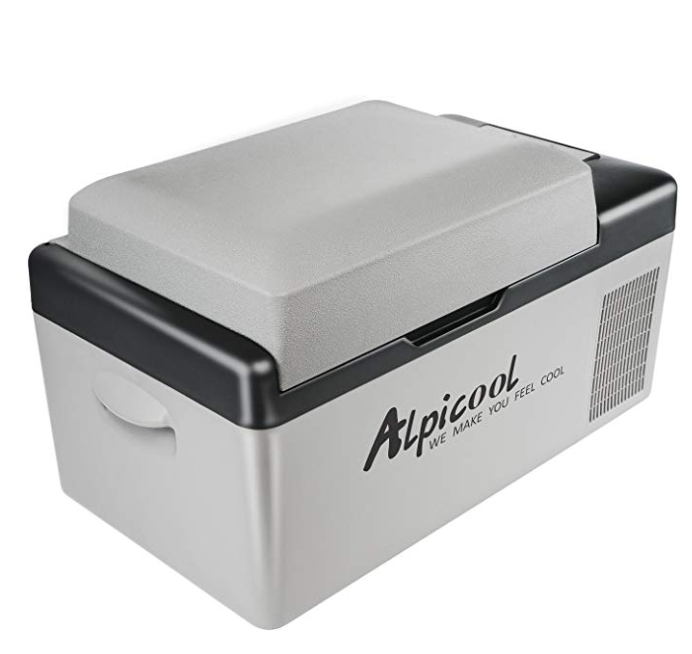
Alpicool C20 Portable Refrigerator
I like gadgets. And I like useful gadgets. Why not a portable refrigerator? Truckers use them. People who own smaller boats use them. People who boondock camp use them. Or how many times have you holiday driven home and thought it would be nice to have some cool drinks or lunch meat for sandwiches available so you aren’t eating expensive, just off the interstate, food. I drive quite a bit for work and live in hotels a bit as well. Now that we’ve identified a need let’s identify a product solution.
Enter the Alpicool C20 portable refrigerator/freezer. That’s right, it is also a freezer. Cost new was $179, however I must have caught that just right as it is now $209. I have a three way (120v, 12vdc, gas) Dometic refrigerator in my camper. It sure is nice but it is NOT a freezer. I think we all know what happens to chicken and pork after 3 or 4 days in the refrigerator. If we go out in the woods for any amount of time we may need some method of freezing food unless we want to eat MRE’s. I do not.
If you have a mini fridge in your bedroom or den for cold drinks, guess what? The Alpicool C20 draws less than half the electricity a mini fridge does. That’s a good reason to have one as well.
Also I spend quite a bit of time working on active military runways at Marine Corps and Naval Air Stations. It sure would be nice to have a tiny fridge full of cold water or Gatorade for those long, hot July afternoons. The Alpicool sits nicely in the back seat of my truck. And there is a 12vdc socket on the back of my armrest/console in my Tacoma. It’s like it was made for it.
The name C20 indicates that it has 20 cubic liters (21 quarts) of storage. That’s not tons of space but plenty of space if you utilize it correctly. After unboxing I took a quick look at the manual and it sure doesn’t say much. In fact it doesn’t even tell you how to change from Celsius to Fahrenheit on the LED display. Mine did come set to Fahrenheit. A quick google reveals though that there are hidden menus available and the manufacturer will provide them upon request which isn’t really necessary because they are all over the internet now. Here are the hidden menus. Click the link below to download in pdf format:
In those hidden menus is a way to calibrate the temperature display with the actual temperature inside the unit. After doing lots of research and reading lots of reviews it seems like a lot of people note that the display is off a few degrees from reality. Once you plus or minus the temp in the hidden menus then it is dead on.
So that is the first thing I intend to do after I set the display from C to F.. I’m going to use a refrigerator thermometer to properly set the temperature. It’s very difficult to see however the indoor temp is just below 40 F and the outside display temp is 37 F. A couple of factors that play in here is that I just threw some warm cokes in, and I’ve just put the fridge thermometer inside. I’m going to let them stabilize just a while longer before I call it “good” or make an adjustment.
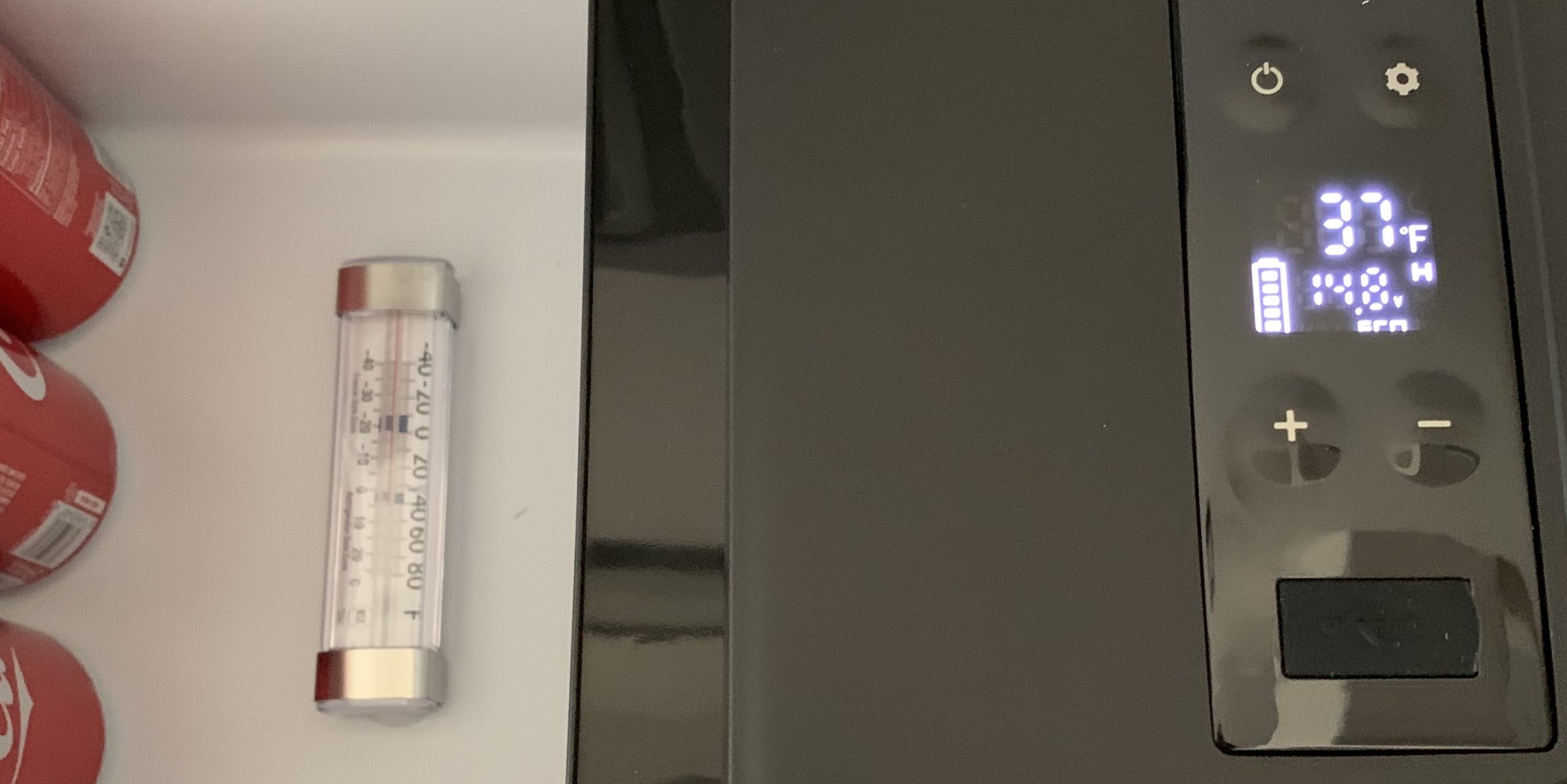
Alpicool C20 Temp inside vs. display
Then I’ll test it on my camper battery. I recently installed a 12vdc cigarette lighter power port in my camper for just this device. Even though the Alpicool C20 works on 120v, I plan on being out in the bush camping off grid on only solar power and my 12 volt batteries.

Installation of USB sockets and 12 volt power port in my camper
Nice addition to the camper if I do say so myself and not exactly sure why a “Solar Ready” camper wouldn’t have a 12 volt power port to power 12 volt appliances. Things that make you go “Hmmmmmmmm”. ?
If I were to run this device on my Jackery Explorer 500 Portable Power Station it would last approximately 9-10 hours were it to stay on constantly pulling 45 watts. Since it runs about 3 minutes every 20 mins or so this thing will probably easily last 24 hours or longer.
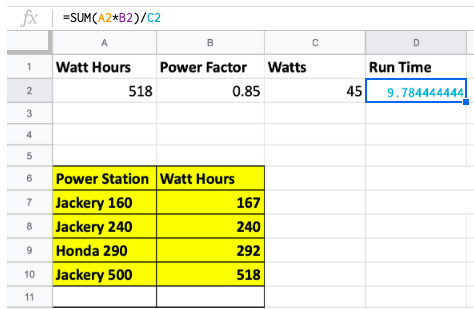
Power Consumption of Alpicool C20 on Jackery 500 if compressor ran constantly
So here it is:
Alpicool C20 Portable Refrigerator (click pics to enlarge)
So far the fridge is QUIET! Although I’d be willing to bet you the sound would be more prominent in the camper or when it is in a vehicle. Still, it is QUIET. Library quiet.
Once I get the cokes cooled down and make sure they don’t freeze or something then I’ll set this to freezer level and put some items in that you’d typically freeze and test that out. Then I’ll put it in the camper and see how the power draw goes. I currently have mine set to Economy (ECO) mode. It comes set to High by default.
Let’s take a look at the power draw while set in ECO. The data was captured from my Sonoff S31 flashed with Tasmota firmware. With the compressor NOT running it pulls about 2 watts when plugged into 120 volt outlet. When the compressor is on it pulls about 50 watts. I saw it hit 55 watts for just a second.
Power Consumption of Alpicool C20 – Compressor Off vs. Compressor On (click to enlarge pics)
After about a day of operation the highest wattage draw I’m seeing is about 47 watts with it generally running about 45 watts. Not a huge difference in power consumption reduction but maybe it is just the fact that the cooling box is cold and the compressor isn’t having to work so hard. But essentially after a day the wattage consumption dropped by about 10 watts.
“This could be the most important part. What does it cost to operate as a household appliance? It runs about 125 watts per day. @ 365 days a year and a utility rate of 12.16 cents per kWh it costs about $5.50 a YEAR to operate.”
.125 x 365 = 45.625 kWh
45.625 x .1216 = 5.548
This also makes sense because the refrigerator I just bought for the garage has an energy star sticker that says it uses around 400 kWh per year at a cost of $48 per year. So it uses just over 1 kWh per day while the Alpicool uses roughly 1/10th of that. Also considering it will be in the truck and camper some of those 365 days means it will cost even less. Wouldn’t cost anything if I ran it off a Jackery power station and kept it charged with solar. Not sure it is cost effective to set up $300 worth of solar gear to save $5 a year though.
Let’s talk about what I like and what I don’t like
PROS:
- Lightweight
- Quiet
- Simple
- Attractive
- Cools FAST
- Inexpensive
- Can also be a freezer
- Low power consumption in Eco mode
CONS:
- No interior themometer
- Temp Display and actual internal temperature could show some disparity. (mine did not)
- Manual poorly written to almost non-helpful at all
- Hidden menus which really should be in the manual.
- Wish it had some grippy rubber feet on it and maybe someplace on the back or side to secure a strap to it so it wouldn’t bounce around inside a moving camper under tow.
After almost a full day of running with a handful of coke cans inside it appears that the refrigerator thermometer I placed inside the cooling compartment agrees with the LED display temperature. Both say 32 degrees F. They must have made some improvements in the design because as I mentioned earlier there were a lot of reviews mentioning the disparity in temps.
Temperature Stabilization (click pics to enlarge)
One other thing I have noticed is that if you are set to F it seems you can only change the temperature in 2 degree (1.8 degree) segments and it will only hit even numbers if they equal a Celsius number. For example If I set the fridge to 33 the next step is 35 or backwards to 32. I suspect that is because it is Chinese and based on the Celsius scale where a change in 1 degree C is about 1.8 degrees F. If you are familiar with Celsius you may be better off using it as it seems to be made for C with just conversions for F. For example:
- It can be set to 32 degrees because that equals 0 C
- The next step is 33 degrees as 1C = 33.8 F
- The next step is 35 as 2C = 35.6 C
In other words while it will display 1, 2, 3, 4, 5 C, etc. It will not display 34 because there is no C equivalent conversion. Hope that makes sense. If I want to set it just above freezing to keep beer or soda COLD but not frozen then 33 or more likely 35 is your Huckleberry.
Just for fun I’m doing an endurance test using my Jackery Explorer 500 portable power station as the power source using the 12vdc port.
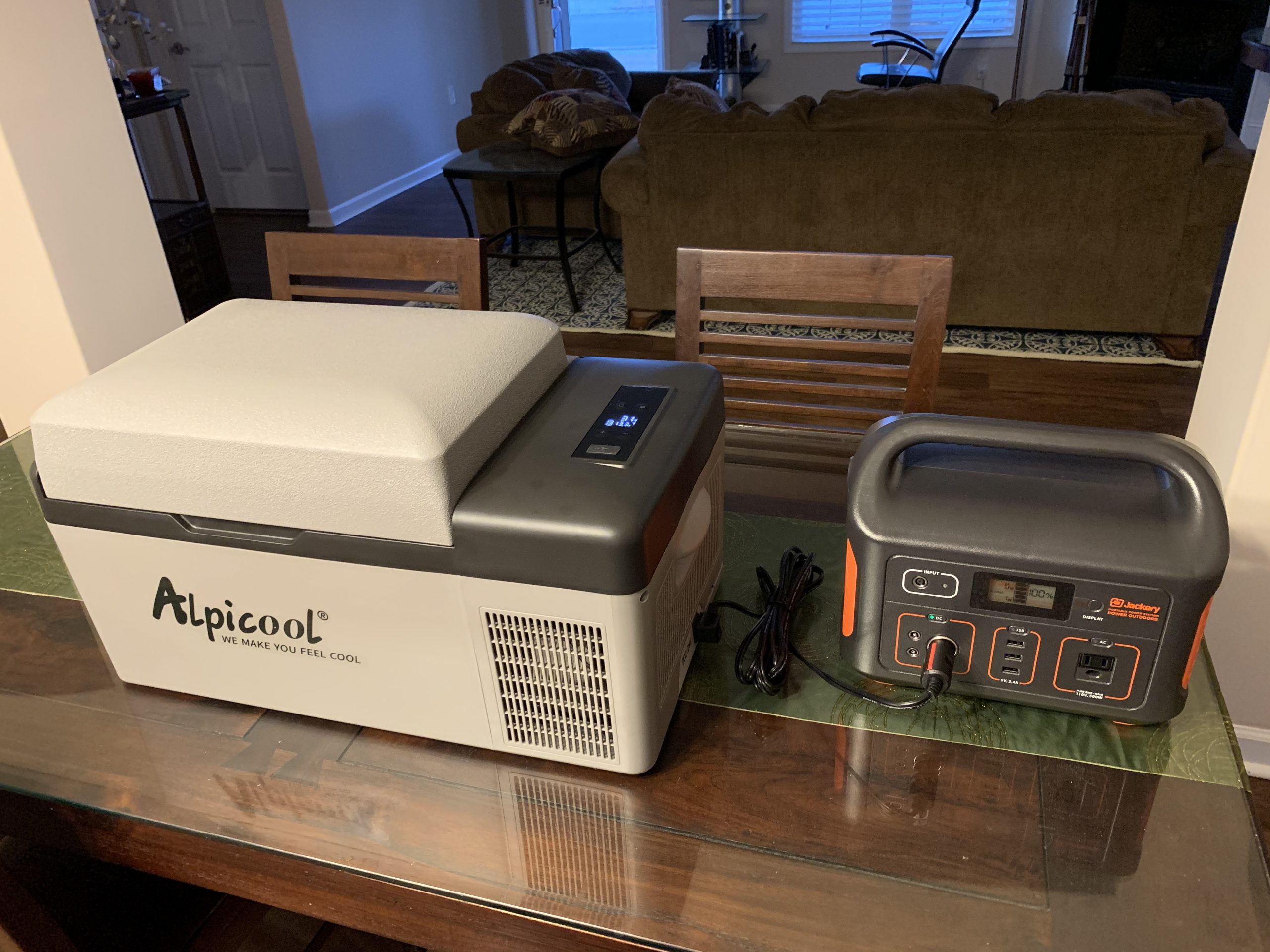
Jackery 500 powering Alpicool C20 using 12vdc
I began the test at 5:15 PM, Friday using a fully charged Jackery 500 and with the fridge cooled to a setting of 35 degrees internally. At 11:15 PM the Jackery indicated 91% charge. Of course this would seem to imply the ability to run for about 60 hours but there are a lot of variables and I don’t want to run my power station down to zero. And I’ll use the fridge as normal and open and close it a few times during testing. Another thing to note is that my testing is indoors with an ambient temperature of 70 degrees F. Run endurance time would differ somewhat if the fridge were in very cold temperatures or very hot temperatures.
Test Results Day 1
- Begin at 5:15 PM – 100%
- 11:30 PM – 91%
- 5:15 AM – 80%
- 11:15 AM – 70%
- 5:15 PM – 61%
It seems the Alpicool C20 uses almost exactly 10% of the Jackery 500 battery supply every 6 hours on refrigerator.
Day 2
- I missed the 11:15-11:30 PM check due to that unimportant thing called sleep.
- 5:15 AM – 38%. For the first time it seems it used slightly more than 10% per 6 hours. I was in and out of the fridge a bit yesterday shooting the video below which took a few takes. Still not too shabby.
- 11:15 AM 28% and then while I was standing there looking at it it dropped to 27% a minute later. Looks like it is going to easily make 48 hours with a little left to spare.
- 5:15 PM – 16% – as predicted 48 full hours with enough power left to charge some phones and iPads. I’m as impressed with the Jackery and I am the Alpicool.
Here’s a quick video overview
[kad_youtube url=”https://youtu.be/dH_xQjwpKfg” ]
Maybe you need one of these, maybe you don’t. But I think it’s super cool. If you camp, drive a lot, or are a tailgate partier………..this is for you!

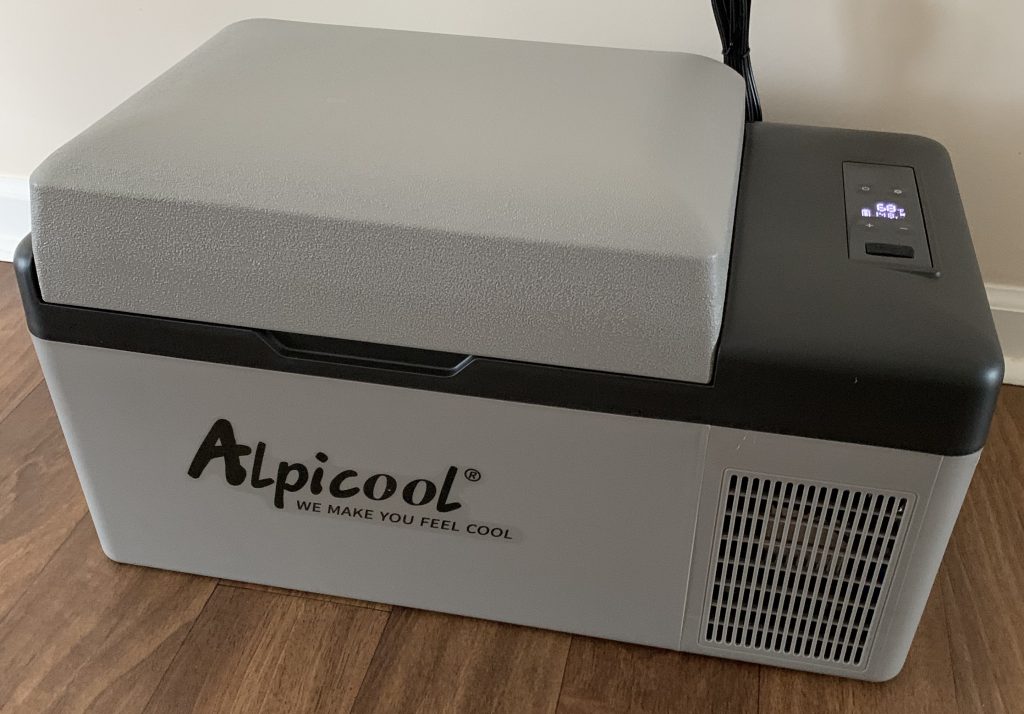

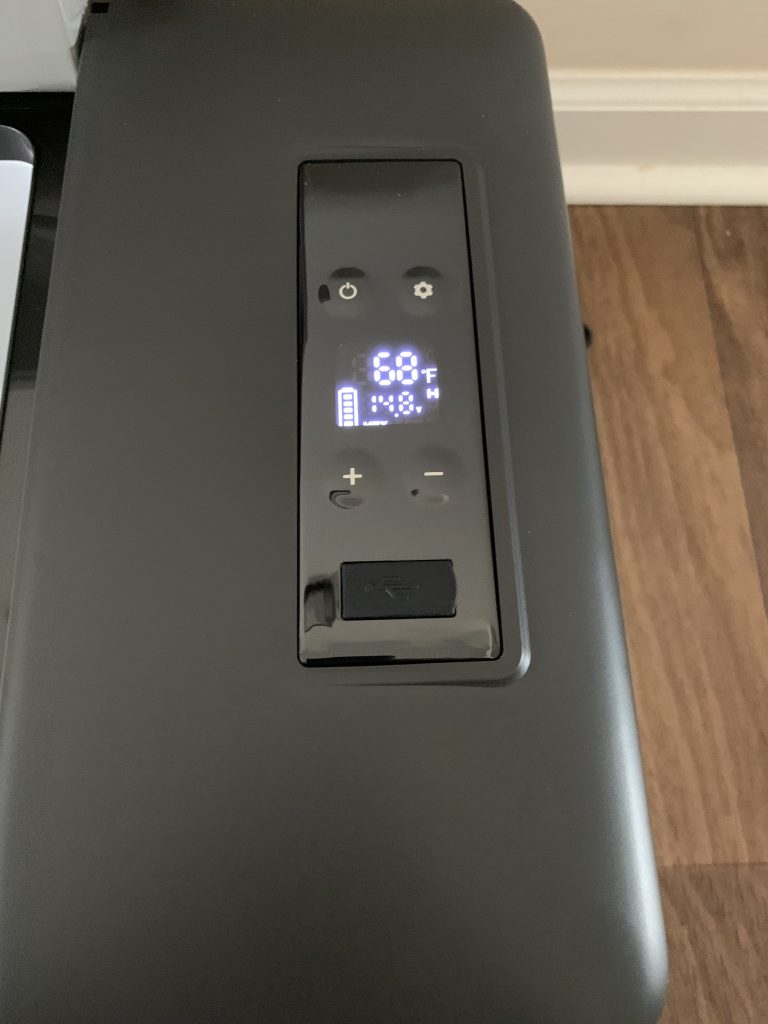

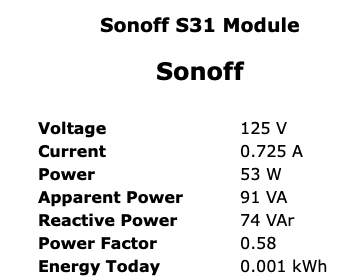
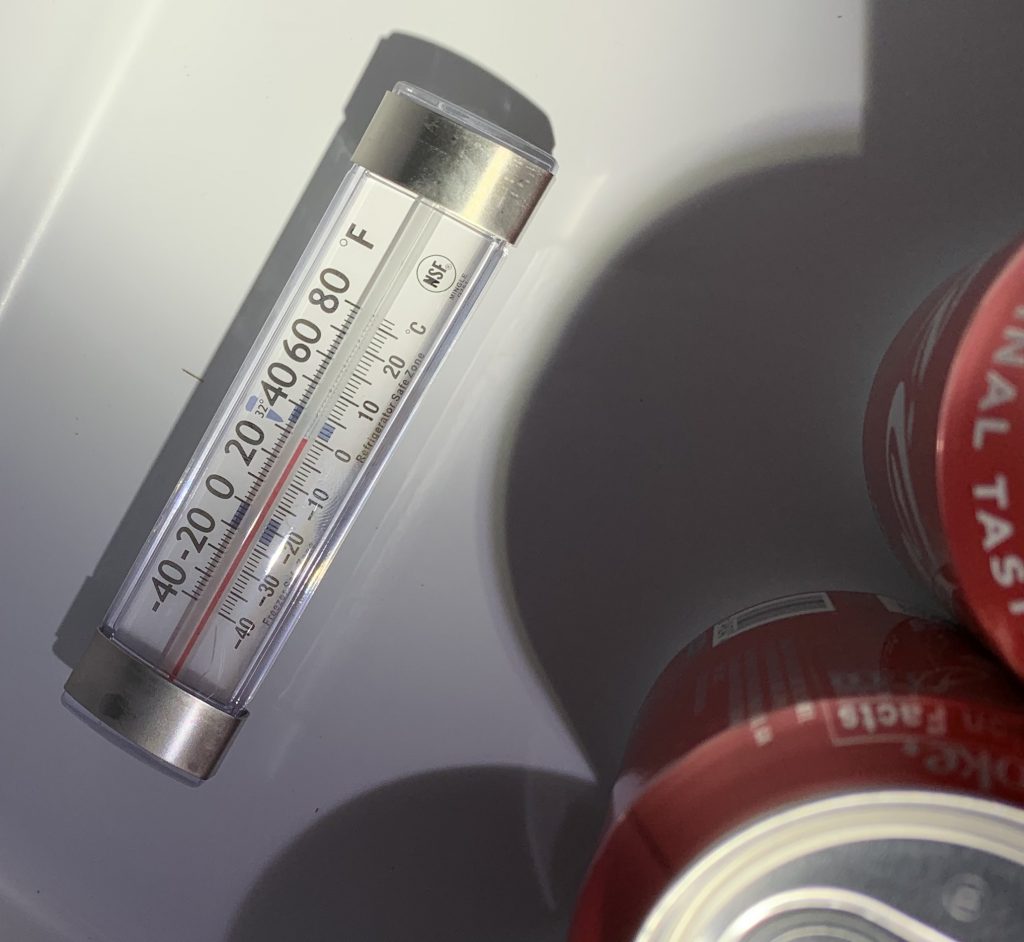
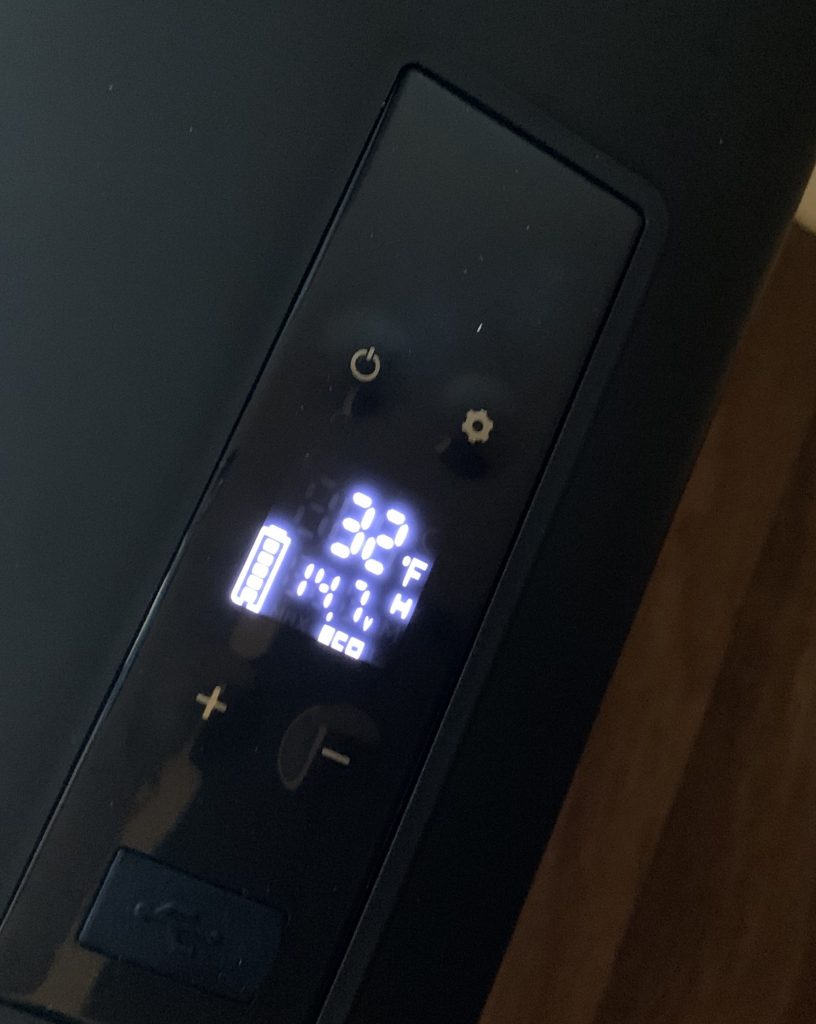
I’m a truck driver and use the same model you have. You are right in saying manual is almost useless. I use mine only as a freezer as I also have a fridge. Occasionally were the temp display is I get F1. I’ve looked all over the internet trying to find out what and why this comes up. I came across your post here and I’m hoping you may have the answer I’m looking for. Great article by the way. Thank you
F1 means it is eating into your truck battery and it shuts itself down so as not to deplete your battery. It has 3 settings for voltage shut off.
Did you solve the problem? I get F1 error. Then, I switched to H2 and H1. F1 error does not clear at all.
I have been using this for almost 2 yr now. I guess this is the end of this fridge life expectancy, I guess.
Your review helped me a lot, thank you! lots of answers i needed where here. I’m a veterinarian and i ‘ve been looking for a small fridge that fits in my car to keep vaccines and some drugs at the required temperature so they don’t go to waste, Between all the models i found, this might be the right call until i can afford a bigger one. I’d really like to set up a small solar panel and battery to avoid hardwiring the fridge but i know next to nothing about that, will try to DIY the whole set, let’s hope for the best.
There is some info on solar panels and building small rigs on my website as well.
https://hagensieker.com/category/solar/
Hello
Do you know how is it different between Alpicool C15 and Alpicool 15L
Just got this as a gift. I thought maybe the battery meant it would work when not connected to a power source but apparently it does not?
What’s the purpose of the battery indicator?
This is what I’m trying to figure out I thought it said it would run off that battery pack for 4 hours but I don’t know how to turn it on I mean if you unplug it then it’s just off it doesn’t automatically switch over to battery so I don’t understand at all
How do you change it from or to this H1 ? I get the F1 also…I am an OTR truck driver…so when truck is shut down, is when it will come up. I have the app…there are three settings in app bottom… H12.0V, M-11.5V and L-9.0V…is this like the ‘shutdown’ setting? I don’t even see an H1…what is that? Thanks!
This Is Amazing Technology to keep our food cool thanks for sharing.
Hi, I was looking for the part about how well it, the alpicool c 20, freezes, but didn’t find it… Has anyone done a little experimenting with time to freeze and lowest temperature achieved?
Unless i misread and ı reread it 5 times,
3 minutes run time every 20 minutes.
That’s 9 minutes every hour.
45watts ÷ 9 = 5 watts used per hour.
5 watts per hour times 24 hours =
120 watts used in 1 complete 24 hour day.
Something wrong here?
Let’s make it simple
If it were 60watts
1 watt per minute
9 minutes run time 1 hour
9 minutes X 24 hours. 9 X 24 = ???
216 watts in 1 day. Something wrong here
Hi, is your Alpicool C20 still working? I have been using mine off and on for road trips over the past year and it stopped turning on.
I run the unit off the car battery while driving. And switch to a Bluetti when stationary. Wondering if the constant on and off from switching power source fried something.
Mine is still working. I keep it mostly plugged in the guest room 24/7 for years. Every once in a while it goes in the back seat on a road trip. A couple LED segments are goofy but it has worked since the day I got it.